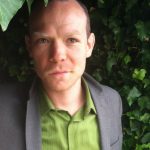Node Smith, ND
We’ve all seen them, and wondered what they are for and why people wear them: rocker bottom shoes. A recent study has confirmed that these shoes may help strengthen back muscles and reduce low back pain by improving posture.
Unstable shoes create more balance, better posture
Researchers have found that wearing shoes that are unstable actually forces the body to compensate to regain balance, thereby improving the strength of back muscles. This muscular strengthening was also seen to reduce low-intensity chronic low back pain.
Exercises aimed at strengthening muscles to give stability to the spine
Exercises are usually prescribed to patients who suffer from low-back pain. These exercises are aimed to strengthen the muscles that give the spine stability and promote a healthy spinal curvature. The difficulty with these exercises is that it is often very difficult for patients to add them into their daily lives. Being able to simply wear a different sort of shoe to achieve the same result is great. By using unstable shoes for several hours a day during normal activities the study showed improvements in spinal curvature as well as muscular strengthening and reduction of pain.
Rocker bottom shoe study
The study looked at 40 patients, all suffering from low-intensity chronic low back pain. Half of them wore rocker bottom shoes with curved soles and the other half wore normal shoes. The study lasted 4 weeks. The specific muscles that were seen to be strengthened by the rocker bottom shoes – by electromyography – were rectus abdominis, external oblique, internal oblique and erector spinae. The participants wore the shoes for 6 hours a day.
Chronic back pain is a common ailment for many
Chronic back pain is something that a great many people suffer from. The reasons why are many, however, a lack of muscular tone in the low back and abdominal muscles is certainly a key contributing factor. If changing the footwear someone wears to work can replace the exercises for low-back strengthening that are typically prescribed, it is likely that patients will get better results – at least those for where a lack of muscular tone is a primary aspect of pain development.
 Node Smith, ND, is a naturopathic physician in Portland, OR and associate editor for NDNR. He has been instrumental in maintaining a firm connection to the philosophy and heritage of naturopathic medicine among the next generation of docs. He helped found the first multi-generational experiential retreat, which brings elders, alumni, and students together for a weekend camp-out where naturopathic medicine and medical philosophy are experienced in nature. Four years ago he helped found the non-profit, Association for Naturopathic ReVitalization (ANR), for which he serves as the board chairman. ANR has a mission to inspire health practitioners to embody the naturopathic principles through experiential education. Node also has a firm belief that the next era of naturopathic medicine will see a resurgence of in-patient facilities which use fasting, earthing, hydrotherapy and homeopathy to bring people back from chronic diseases of modern living; he is involved in numerous conversations and projects to bring about this vision.
Node Smith, ND, is a naturopathic physician in Portland, OR and associate editor for NDNR. He has been instrumental in maintaining a firm connection to the philosophy and heritage of naturopathic medicine among the next generation of docs. He helped found the first multi-generational experiential retreat, which brings elders, alumni, and students together for a weekend camp-out where naturopathic medicine and medical philosophy are experienced in nature. Four years ago he helped found the non-profit, Association for Naturopathic ReVitalization (ANR), for which he serves as the board chairman. ANR has a mission to inspire health practitioners to embody the naturopathic principles through experiential education. Node also has a firm belief that the next era of naturopathic medicine will see a resurgence of in-patient facilities which use fasting, earthing, hydrotherapy and homeopathy to bring people back from chronic diseases of modern living; he is involved in numerous conversations and projects to bring about this vision.
